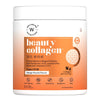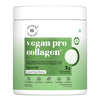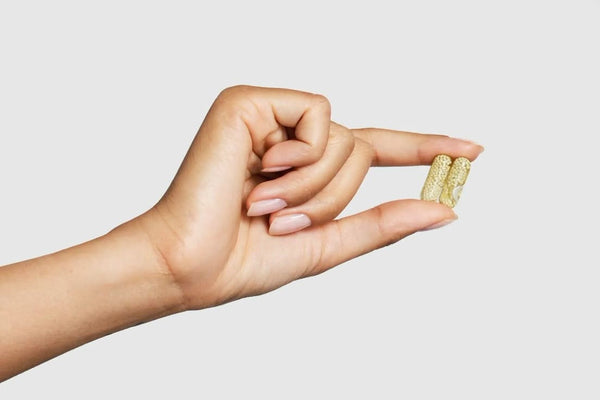We all know sugar has a way of sneaking into our lives — in our tea, our snacks, even in “healthy” food. What starts as an innocent craving can often spiral into an energy crash, mood swing, or even disrupted sleep. While a little sweetness now and then is fine, consistently high sugar intake can throw your health off-balance.
But here’s the good news: Breaking up with sugar doesn’t mean giving up the joy of food. It means reclaiming your energy, mood, skin, and digestion by making mindful choices that nourish you better. Here are 9 smart, sustainable steps to help you reduce sugar without feeling deprived.
1. Spot Your Sugar
Your first step isn’t to cut sugar — it’s to spot it. Sugar goes by many names on ingredient lists: sucrose, glucose, high fructose corn syrup, maltodextrin, barley malt, agave, and more. It’s often hiding in “healthy” foods like salad dressings, energy bars, breakfast cereals, flavored yogurts, and packaged sauces.
Start reading nutrition labels carefully. If sugar or its many aliases show up in the first few ingredients, it’s time to reconsider. The more you build awareness, the easier it becomes to avoid unnecessary sugar.
2. Cut Back Slowly
Quitting sugar in a go can lead to withdrawal symptoms — headaches, fatigue, irritability, or stronger cravings. A more sustainable approach? Scale down gradually. Reduce the sugar in your tea or coffee. Choose plain yogurt over flavored yogurt. Opt for dark chocolate instead of milk. Small shifts add up.
The goal is to retrain your palate and stabilize your energy levels — and that takes time.
3. Build Balanced Meals
One of the main reasons we crave sugar is because we’re not eating balanced meals. If you’re eating lots of refined carbs with little fiber, protein, or healthy fat, you’re setting yourself up for blood sugar spikes and crashes followed by urgent cravings for more sugar.
Instead, aim for meals that have a mix of macronutrients. Think: protein-rich tofu with brown rice and veggies, a smoothie with almond butter, berries, and seeds, or a quinoa salad with chickpeas and olive oil. Balanced meals keep your blood sugar stable and your cravings in check.
4. Get Friendly with Natural Flavors
Sugar often sneaks into your day not just because of cravings, but because of habit. We reach for that sweetened beverage or dessert out of routine, not hunger.
To change this, explore the world of natural flavor: cinnamon, cardamom, vanilla, nutmeg, citrus zest — these ingredients can elevate your food without added sugar. Add cinnamon to your oats, infuse water with orange slices and mint, or use vanilla bean in smoothies.
Your taste buds will start craving these natural flavors over the artificial sweetness of refined sugar.
5. Don’t Rely on “Healthy” Sugar Substitutes
Honey, maple syrup, jaggery, coconut sugar — they all sound more wholesome than refined sugar. And while they may retain some minerals, your body still processes them as sugar. They can still spike your blood sugar and trigger the same addictive response.
If you’re using these alternatives, use them mindfully and sparingly. Better yet, allow your body to adjust to less overall sweetness. Once you’ve made the shift, you’ll find you need much less to feel satisfied.
6. Stay Hydrated
Dehydration can often feel like hunger or sugar cravings. Many times, what your body really needs is water — not a cookie.
Drink water regularly throughout the day. Add lemon, herbs, or fruit slices to keep it interesting. Herbal teas like peppermint or fennel are also great for curbing cravings and soothing digestion. Hydration is foundational to feeling good — and keeping sugar at bay.
7. Plan for the Cravings, Don’t Just Fight Them
Sugar cravings are real, and trying to “willpower” your way through them rarely works. Instead, plan smarter swaps.
Keep better snacks on hand — like roasted nuts, fruit with nut butter, a boiled egg, or a small bowl of berries. You’re more likely to make a good choice when the option is right in front of you. Cravings pass — but what you feed them with determines how strong they come back.
8. Retrain Your Palate
One of the most empowering parts of reducing sugar is watching your taste buds evolve. What once tasted just right may soon taste overly sweet. You’ll start to appreciate the natural sweetness in fruit, roasted vegetables, and even whole grains.
This shift doesn’t happen overnight, but it does happen. Stick with it for a few weeks, and you’ll find yourself genuinely enjoying food without needing the sugar hit.
9. Rethink Sugar in Your Supplements and Protein Powders
Here’s something many people miss: Sugar isn’t just in your food — it’s often hiding in your wellness routine. From flavored protein powders to fizzy supplements and multivitamin gummies, sugar often sneaks in under the radar.
When you’re actively working to reduce sugar, these hidden sources can hold you back. That’s why it’s worth opting for clean, no-added-sugar formulations — especially if you’re taking supplements daily.
At Wellbeing Nutrition, our supplements are carefully crafted without added sugar, using natural sweeteners like monk fruit and plant-based flavors that don’t spike blood sugar. From plant-based protein blends to effervescent, melts, collagens, and daily vitamins, their range supports your health goals without unnecessary sugar. It’s a small shift with a big impact — especially when it’s part of your everyday routine.
Conclusion
Breaking up with sugar doesn’t mean giving up pleasure, flavor, or comfort. It’s about creating space for better energy, better skin, better digestion and better mood. It’s about choosing foods and routines that support the version of you that feels balanced, vibrant, and strong.
By following these 9 steps, you’ll empower yourself to make smarter choices, without deprivation. And soon enough, you’ll find that the less sugar you need, the sweeter life begins to taste.






























 DOWNLOAD NOW
DOWNLOAD NOW
